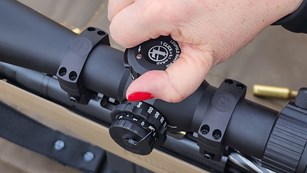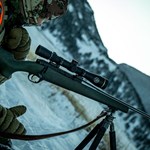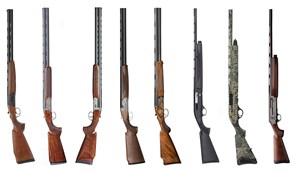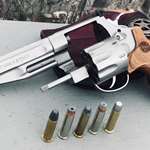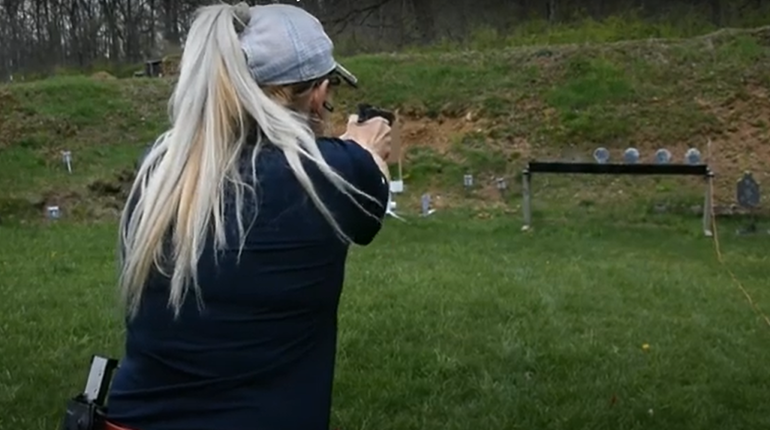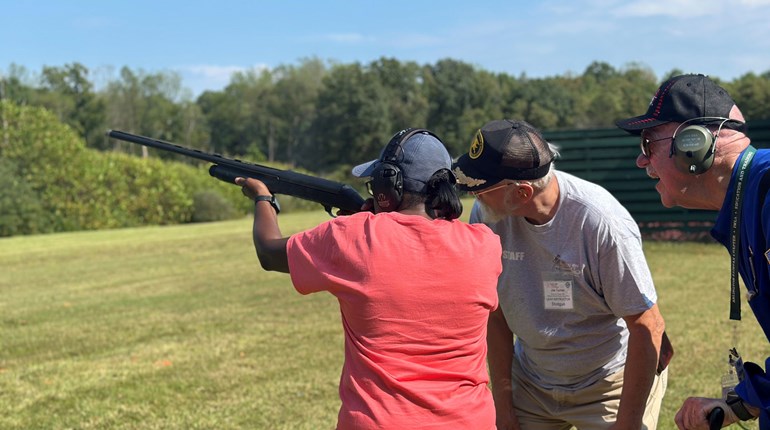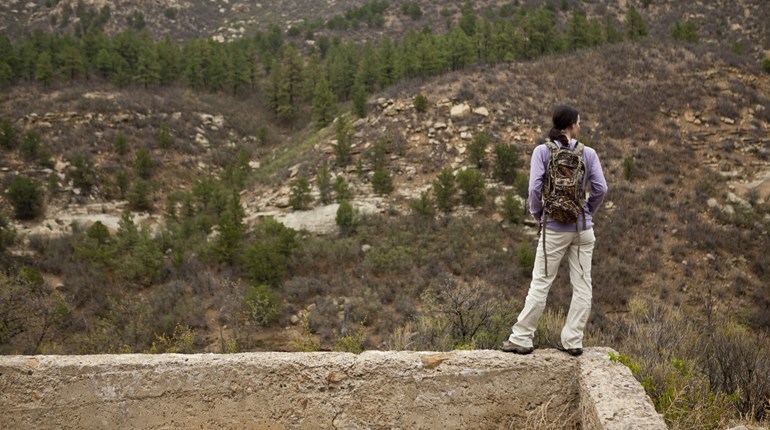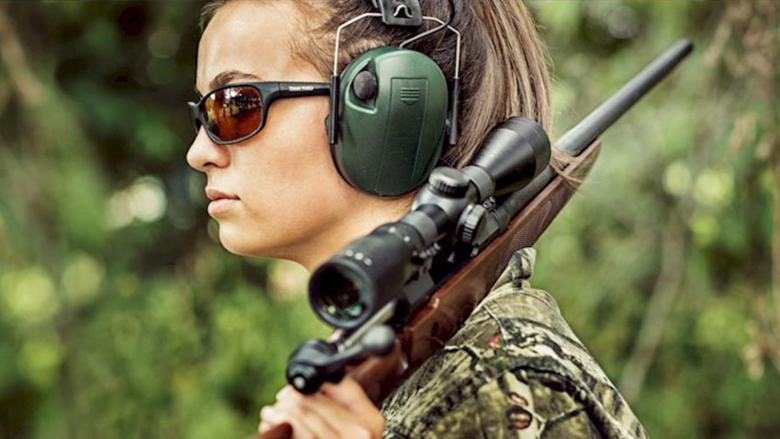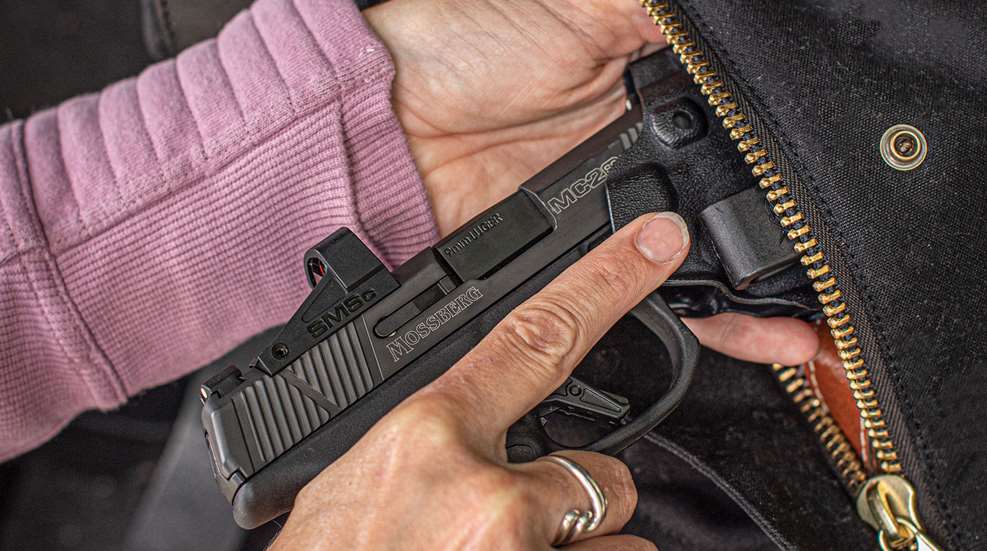
Have you heard the term “brandishing” in reference to firearms? We think of brandishing as recklessly waving a gun around, but that’s not quite it. Federal law defines brandishing as “to display all or part of the firearm, or otherwise make the presence of the firearm known to another person, in order to intimidate that person, regardless of whether the firearm is directly visible to that person.” Most states have a law prohibiting this, although few of them actually call it brandishing—you’ll more often hear it called things like “unlawful display of a firearm,” “unlawful exhibition of a firearm,” “menacing,” “assault with a deadly weapon” or something else, like “disorderly conduct.” It might be a misdemeanor or a felony, depending on your state’s laws.
Disclaimer: I am not an attorney and this is not legal advice. But the long and short of it is that you can be convicted of a crime if a jury thinks you intentionally used your firearm to coerce, intimidate or threaten someone. Note that you might not have actually intended to do those things when you drew your gun, but that doesn’t matter. If a jury believes you intended to, that’s enough to land you in real trouble. Even pulling out your gun isn’t required for you to catch a brandishing charge—simply saying the words “I have a gun” can be enough under the right (wrong?) circumstances. If you open carry, this can get particularly hairy, as almost any act of aggression against another person could be considered brandishing if the cop or prosecutor really wants it to be.
This is one of the reasons we encourage you to do all you can to avoid having to draw your gun—once you do, you open a door into the legal system, and things might head down a path you didn’t expect. It’s extremely important that you understand when you are legally justified in drawing your concealed-carry gun and when you aren’t. This varies by state, so look up your state’s self-defense laws. They can be complicated, so consider consulting a self-defense attorney in your state for detailed and specific advice. But in general, you should only draw your gun if:
There is a threat that needs to be stopped.
The threat has the ability, opportunity and intent to cause you or another person (check your state laws on that) immediate harm or death.
A “reasonable person” would agree that you are in jeopardy and your use of a firearm would be justified to stop the threat. Remember “reasonable use” could ultimately be determined by a jury.
In other words, your gun is a last resort. You draw it only when you have no other reasonable option. If you’re not facing a threat, or if you’re the one intentionally or unintentionally creating the threat through “fighting words” or otherwise, you could find yourself in serious hot water by drawing your firearm. You should always use the least amount of force needed to stop the threat—if you’re lucky, placing your hand on your gun’s grip and stepping into a fighting stance might be enough for the threat to turn around and retreat. Or the least amount of force necessary to stop the threat might be drawing your gun and not firing it. It might even be the use of pepper spray, which emphasizes the idea that it’s smart to have a less-than-lethal self-defense option at your disposal. Don’t be afraid to draw your gun when you really need to, but be sure you need to.
Your firearm is not a tool to get your way—using a gun to get what they want is what criminals do. You, a law-abiding citizen, only use the gun as a tool to stop a real threat. This is also why we remind you that when you’re concealed carrying, you’ve got to learn to let things go. Say you get into a screaming match on the side of the road with a road-raging driver who just rammed your bumper. If you’re unarmed or if you’re concealed carrying (in most cases), it’s just a verbal altercation. If you’re open carrying or if you lift your shirt and put your hand on your gun’s grip while you and the other driver aggressively yell obscenities and accusations at each other, you potentially open yourself up to a criminal charge if the other driver says she feels threatened. Learning to control your emotions and your temper is an important step toward carrying safely and minimizing the changes of complications.
Every state is different, but remember that the essence of these types of brandishing laws, regardless of what your state calls them, is that you cannot use your firearm to coerce, threaten or intimidate someone. That’s a pretty wide definition that’s open to interpretation by juries and prosecutors, so do everything you can to avoid having to draw your gun, and only do so when you are under a threat that you cannot stop through any other means.
